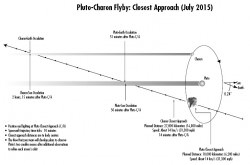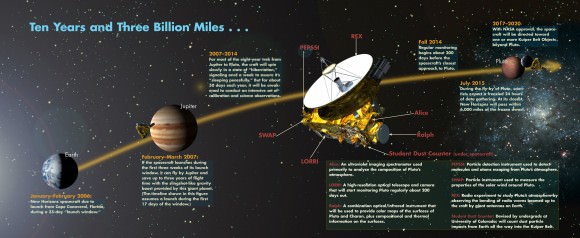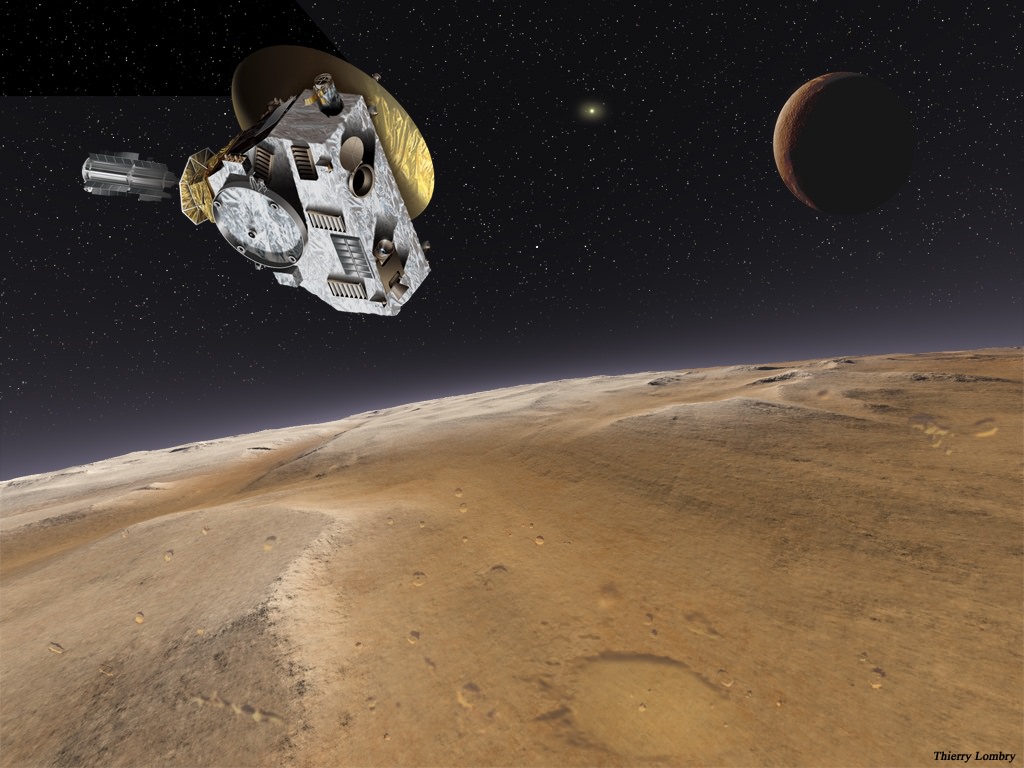[/caption]
It may not have noticed anything different as it continued its high-speed trek through interplanetary space, but today New Horizons passed a new milestone: it is now (and will be for quite some time) the closest spacecraft ever to Pluto!
This breaks the previous record held by Voyager 1, which came within 983 million miles (1.58 billion km) of the dwarf planet on January 29, 1986.
New Horizons has been traveling through the solar system since its launch on January 19, 2006 and is now speeding toward Pluto at around 34,500 mph (55,500 km/hr). It has thus far traveled for 2,143 days and is just over halfway to the distant icy world.
“Although we’re still a long way — 1.5 billion kilometers from Pluto — we’re now in new territory as the closest any spacecraft has ever gotten to Pluto, and getting closer every day by over a million kilometers.”
– Alan Stern, New Horizons Principal Investigator
A gravity boost obtained by a close pass of Jupiter in 2007 gave the spacecraft the extra speed needed to make it to Pluto by 2015. (Without that, it wouldn’t have been reaching Pluto until 2036!)
Achievements like this are wonderful indicators that New Horizons is alive and well and that its historic goal is getting increasingly closer every day.

“We’ve come a long way across the solar system,” said Glen Fountain, New Horizons project manager at the Johns Hopkins University Applied Physics Laboratory (APL). “When we launched it seemed like our 10-year journey would take forever, but those years have been passing us quickly. We’re almost six years in flight, and it’s just about three years until our encounter begins.”
See answers to some FAQs about Pluto
New Horizons will pass by Pluto and its moons on July 14, 2015, becoming the first spacecraft ever to visit the distant system. It will image Pluto’s surface in unprecedented detail, resolving features as small as 200 feet (60 meters) across.
New Horizons will not land or enter orbit around Pluto but instead quickly pass by and continue on into the Kuiper Belt, where even more distant frozen worlds await. The New Horizons team is currently investigating further exploration targets should its mission be extended.
Read more on the New Horizons mission site.



Isn’t that first graphic voyager?
Bah. yes you are right. (Fixed, btw.)
I’m hoping New Horizons is the first of many missions to Pluto, with an orbiter and even a lander/rover coming next!
Not with the current Pu-238 situation..
Cannot wait to see pictures up close! :O
Why only a fly-by ?. Is it possible to get enough information from a fly-by ?. Isn’t it possible to study Kuiper belt objects using plutos gravitational assistance ?.
We will never get “enough information”. =D
A flyby was (marginally, seeing the many times this proposal was scrapped and restored) economically feasible. And it makes both scientific and economical sense to try to make flybys of other Kuiper objects while you are out there.
If they go for gravity assist the orbit will bend more and make observation iffier. Now they can pick the best observing position for the whole system,* while presumably having the orbit deflection tell them something about the masses out there.
And an assist would increase (or decrease depending on your choice of trajectory) velocity besides giving some directionality. Apparently the probe has a reasonable velocity for good enough flyby observation of Kuiper objects already. You may not want to increase velocity any further at a guess.
———————-
* Except they may have to pick a trajectory in order to survive orbiting dust that recently has become a concern.
Which adds that a flyby without assist is inherently a much more robust option for venturing out into the unknown.
Flyby is cheaper (in terms of mass). You can pack more science devices on board. You have less time to make measurements but most of the time it’s better to measure more once than to measure less for longer time.